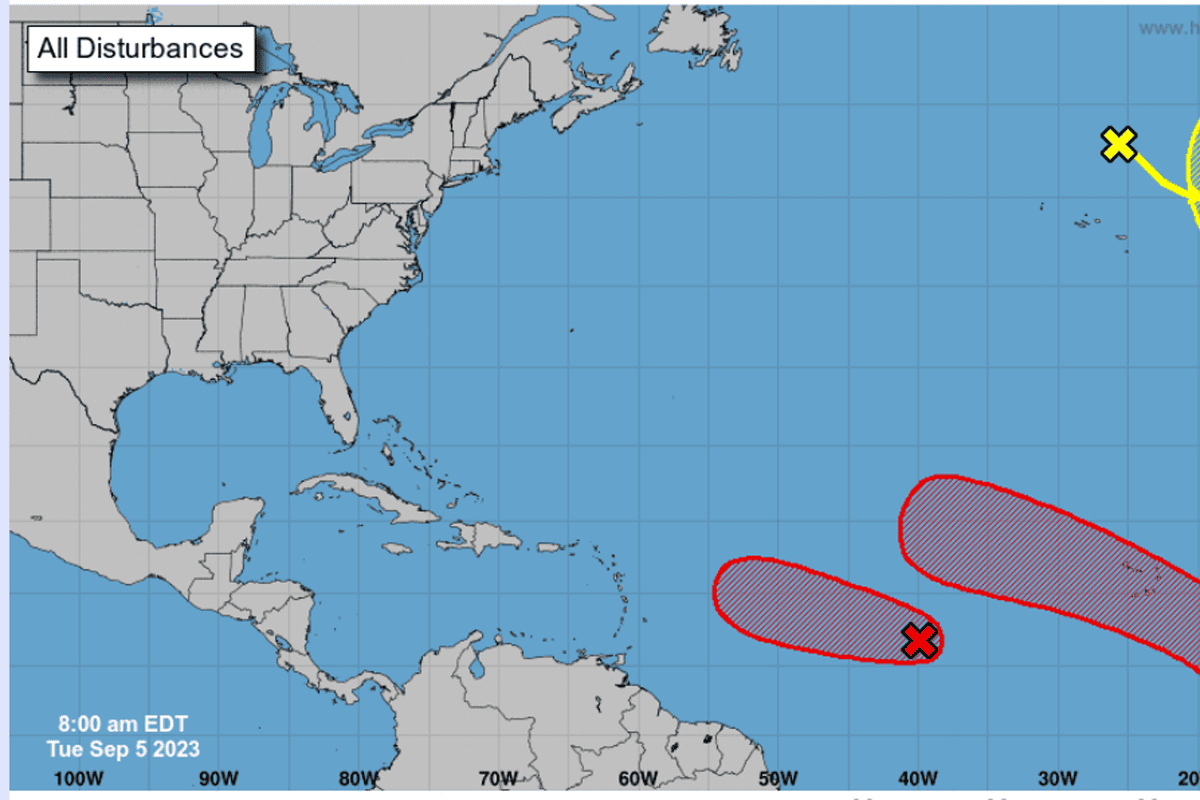National Hurricane Center Updates: National Hurricane Center Beryl

The National Hurricane Center (NHC) continues to monitor Hurricane Beryl, which has strengthened to a Category 3 hurricane. As of 8 AM EDT, Beryl is located about 600 miles east-southeast of Cape Hatteras, North Carolina, and is moving west-northwest at 16 mph. Maximum sustained winds are near 120 mph, with higher gusts. Beryl is expected to continue strengthening over the next 24 hours and could become a major hurricane by tonight.
The NHC has issued a hurricane warning for the coast of North Carolina from Surf City to the North Carolina/Virginia border, including Pamlico Sound. A tropical storm warning is in effect for the coast of North Carolina from south of Surf City to Cape Lookout, and for the coast of Virginia from the North Carolina/Virginia border to Cape Henry.
Residents in the hurricane warning area should prepare for possible landfall and evacuate if ordered to do so. Residents in the tropical storm warning area should monitor the storm’s progress and be prepared to take action if necessary.
Potential Impact Areas, National hurricane center beryl
Hurricane Beryl is expected to bring heavy rainfall to the coast of North Carolina and Virginia, with some areas receiving up to 10 inches of rain. The storm could also produce damaging winds and coastal flooding.
Evacuation Zones
Evacuation zones have been established for the coast of North Carolina and Virginia. Residents in these zones should be prepared to evacuate if ordered to do so. Evacuation routes and shelters will be announced by local officials.
Hurricane Preparedness

National hurricane center beryl – Hurricane preparedness is crucial for ensuring the safety and well-being of communities in hurricane-prone areas. By taking proactive measures, individuals and families can minimize the risks associated with these powerful storms.
To effectively prepare for a hurricane, it is essential to create an emergency plan and assemble a comprehensive hurricane preparedness kit. The plan should Artikel evacuation procedures, shelter locations, and contact information for emergency responders. The kit should include essential supplies such as food, water, first-aid supplies, and important documents.
Evacuation Procedures
In the event of an approaching hurricane, it is important to follow the evacuation orders issued by local authorities. These orders are based on the severity of the storm and the potential impact on specific areas. When evacuating, it is crucial to stay informed about the latest weather updates and road conditions.
Evacuation routes should be identified and planned in advance. These routes should lead to higher ground or inland areas away from the storm surge and flooding. It is also important to have multiple evacuation routes in case one becomes impassable.
Shelter Locations
During a hurricane, it is often necessary to seek shelter in designated evacuation centers. These centers provide a safe haven from the storm and offer essential services such as food, water, and medical assistance. It is important to locate the nearest shelter in advance and to make arrangements for transportation if needed.
When seeking shelter, it is crucial to follow the instructions of the shelter staff and to be prepared to stay for an extended period. It is also important to bring essential supplies, including food, water, medications, and personal items.
Hurricane Safety
Hurricanes are among the most powerful and destructive forces of nature. They can cause widespread damage and loss of life. It is important to be aware of the dangers associated with hurricanes and to take steps to stay safe.
Before a hurricane, there are a number of things you can do to prepare. These include:
- Gathering emergency supplies, such as food, water, first-aid kits, and flashlights.
- Securing your home by boarding up windows and doors.
- Evacuating to a safe location if you are in an area that is at risk of flooding or storm surge.
During a hurricane, it is important to stay indoors and away from windows. You should also:
- Listen to the radio or television for updates on the hurricane.
- Stay away from floodwaters, which can be contaminated with sewage and other hazardous materials.
- If you must go outside, wear sturdy shoes and clothing to protect yourself from flying debris.
After a hurricane, it is important to be aware of the dangers that may still exist. These include:
- Downed power lines, which can be deadly.
- Flooding, which can make it difficult to get around.
- Structural damage to buildings, which can make them unsafe to enter.
It is important to stay informed and follow instructions from authorities after a hurricane. This will help you to stay safe and avoid unnecessary risks.
National Hurricane Center Beryl churned past the windward islands on its way toward the Lesser Antilles. Beryl is expected to strengthen into a hurricane by Wednesday and could bring heavy rain and flooding to the islands.
National Hurricane Center Beryl deh monitor bad weather fuh Beryl, weh suppose to reach hurricane strength inna next few days. Fu mo info bout di prediction fuh Hurricane Beryl, yuh fi check out dis hurricane beryl prediction. Di National Hurricane Center Beryl team a keep a close eye pon di storm and will provide updates as needed.